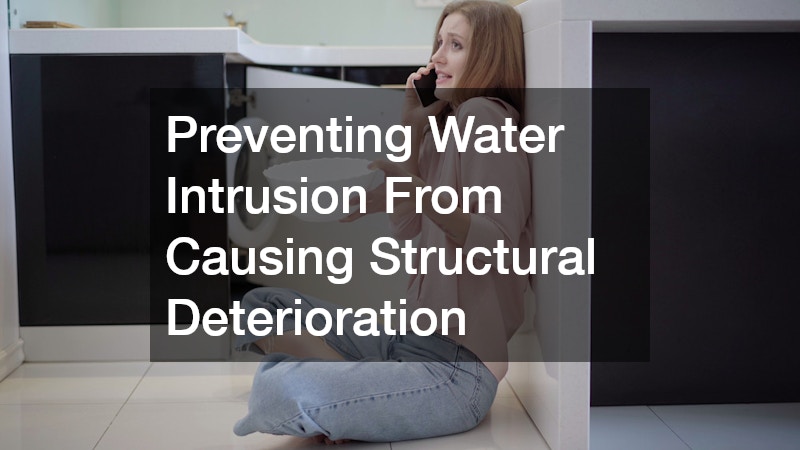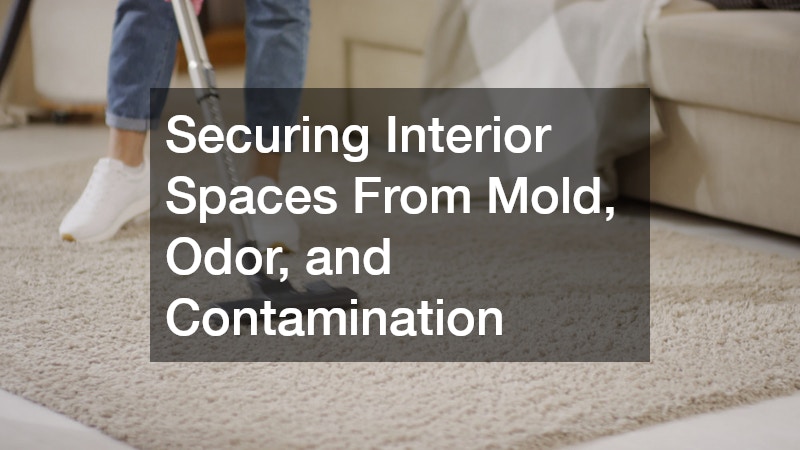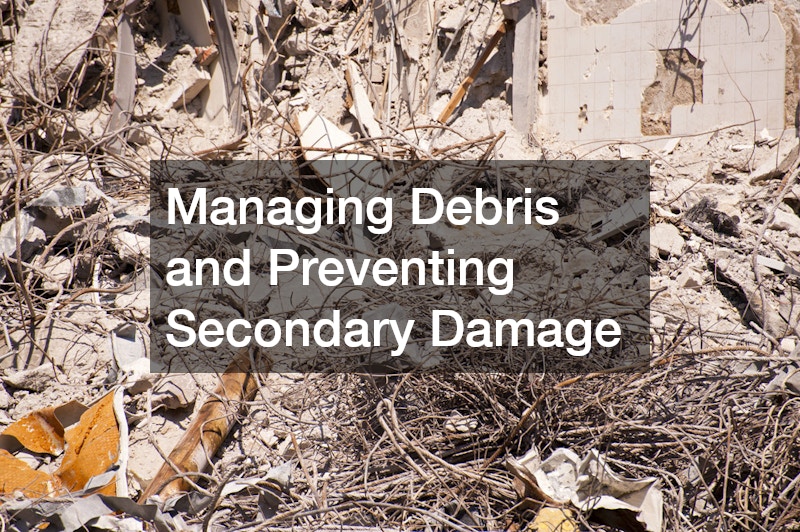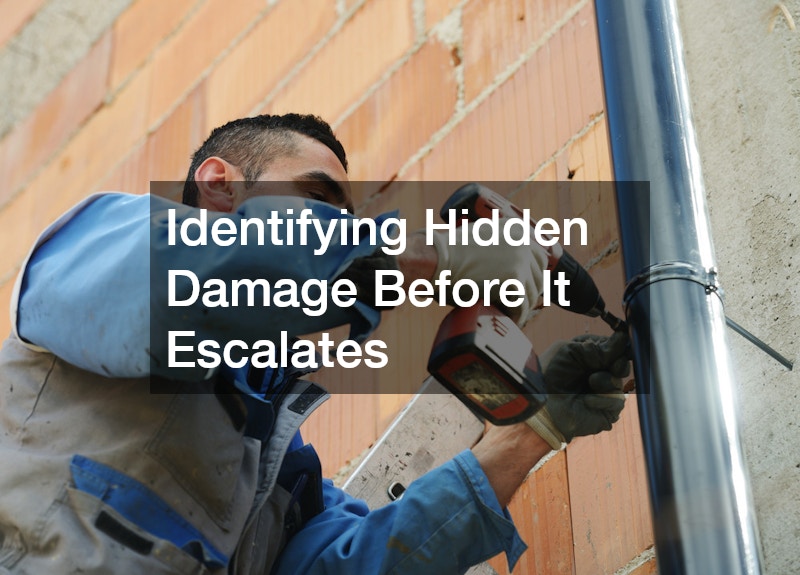Severe weather can put extraordinary strain on a home’s structural integrity, comfort, and long-term safety. From heavy winds to torrential rain to freezing winter conditions, storms test the durability of every component that protects a property. When damage occurs, even if it seems minor at first, issues can escalate rapidly. Moisture infiltration leads to mold growth, compromised foundations weaken over time, and small cracks turn into major leaks. For many homeowners, the real challenge isn’t just the storm itself but the decisions made in the hours and days immediately following it. Acting quickly after a storm is the most effective way to limit the severity of repairs, protect your home’s value, prevent safety hazards, and reduce long-term expenses. Prompt action ensures that vulnerable areas are stabilized, dangerous conditions are identified early, and professional help is brought in before secondary damage sets in. Understanding why timing matters after a storm—and how responsive planning protects your investment—can make the difference between a manageable fix and a massive renovation.
Identifying Hidden Damage Before It Escalates
After any weather event, issues may not be immediately visible. Water can seep into small openings, travel behind walls, or pool beneath flooring. Even slight structural shifts may go unnoticed until the next major storm hits. Acting quickly on home storm repair allows trained professionals to uncover problems that would otherwise remain hidden long enough to cause severe long-term damage. This includes structural weakening, water infiltration, electrical hazards, and mold development. Homeowners often underestimate how fast these problems progress; moisture can spread through porous materials within hours, and structural components can begin to degrade with prolonged exposure.
Many homeowners need fast assessments when fallen branches or damaged limbs pose immediate risks, which is when emergency tree removal becomes essential. Addressing these risks right away prevents additional roof punctures, broken windows, or further exterior damage during the next wind gust. Early inspections also give contractors enough time to create a stabilization plan that keeps the home safe during temporary repairs. Acting quickly allows experts to trace the source of leaks, detect small fractures in the exterior envelope, and find areas where insulation has been compromised. This first step ensures that larger, more expensive issues never get the chance to form.
Because of how quickly conditions can worsen, early intervention reduces long-term repair bills and protects the home’s structural lifespan. When addressed promptly, the first instance of home storm repair ensures that both the visible and hidden layers of the property are thoroughly evaluated and restored before another round of weather can expose weak points or expand the damage. The peace of mind that follows from early detection keeps families safe and the home better protected over time.
Addressing Roof Compromise Before Leaks Spread
The roof is one of the most storm-vulnerable components of any home. Heavy winds can lift shingles, hail can create fractures, and flying debris can puncture the surface. Once the roofing envelope is compromised, even a small opening allows water to flood into attic spaces. This moisture then spreads downward, damaging insulation, ceilings, walls, and flooring materials. Quick action on home storm repair prevents this chain reaction from unfolding.
Prompt professional intervention also ensures that roofing experts can assess damage levels accurately. Delaying roof repairs increases the amount of water that infiltrates the home, encouraging mold growth and wood rot. When materials remain wet for extended periods, they begin to degrade, leading to sagging ceilings, warped framing, and weakened internal structures. Early repair stops these conditions before they take hold, restoring waterproof protection at the home’s first line of defense.
Another layer of prevention comes from involving a local roofing contractor immediately after a storm. Their familiarity with regional weather patterns, material durability, and common structural vulnerabilities equips them to identify concerns that less specialized contractors might overlook. Time is a critical factor, particularly when storms occur in seasons with frequent weather fluctuations. Acting quickly keeps the home protected between storms and ensures that the roof remains secure. A fast response to rooftop damage also protects long-term resale value. Homebuyers are cautious about properties with a history of leaks, water stains, or hidden moisture issues. Keeping repairs timely and professional helps maintain both performance and aesthetic appeal.

Preventing Water Intrusion From Causing Structural Deterioration
Once water enters the home, the timeline for deterioration becomes extremely short. Within hours, drywall begins to absorb moisture. Within days, mold colonies can form. Within weeks, structural weakness emerges. This is why immediate action is essential. When water travels through walls, floors, and ceilings, it brings hidden consequences that become increasingly expensive to resolve over time.
Major storms often break windows, loosen seals, or damage protective barriers around the home. When these openings are not addressed quickly, rainwater has a direct path inside. Swift glass replacement helps restore the home’s exterior envelope, eliminating one of the most common entry points for moisture. Replacing broken or cracked glass also prevents drafts, protects interior belongings, and maintains climate control efficiency.
Storm-related water exposure often spreads further than homeowners realize. Water follows gravity, moves through insulation, and collects in pockets that stay damp long after the visible water is gone. Moisture trapped behind walls creates ideal conditions for mold growth, which can spread rapidly and compromise indoor air quality. Addressing soaked materials immediately is crucial for preventing mold-related health concerns.
This is also where investing in hurricane impact windows before or shortly after a storm becomes part of a long-term prevention strategy. Although installed as a protective upgrade, they prevent future breakage during heavy winds and significantly reduce the likelihood of water intrusion. By reinforcing vulnerable areas, homeowners minimize storm-related losses. Because water damage spreads fast and quietly, early intervention remains the surest way to stop a small issue from turning into expensive renovation work.
Restoring Electrical Safety and Preventing Fire Hazards
Storms pose substantial risks to a home’s electrical system. Flooding, downed trees, power surges, and compromised wiring can create dangerous conditions. Delayed repairs increase the risk of electrical shorts, shock hazards, and even house fires. Immediate post-storm inspections are critical for identifying which components are damaged, overloaded, or unsafe to operate.
Engaging a local electrical contractor quickly ensures that the entire system is tested, including wiring, panels, outlets, fixtures, and appliances. Not all electrical damage is visible; water may seep into wall cavities, saturate insulation surrounding wires, or pool in unseen areas near junction boxes. Professionals have the tools to detect these hazards before they become emergencies.
During a severe storm, generators often become essential for maintaining power. Installing a house generator serves as a long-term protective measure for future outages, minimizing disruptions and preventing unsafe improvisation with temporary power sources. After the storm, however, generators and electrical systems must be inspected for safety before continued use.
Electrical damage progresses rapidly when moisture remains trapped inside surfaces. Rust, corrosion, and short-circuits become more likely with each hour that passes. Quick repairs avoid the possibility of systemwide electrical failure and protect other appliances from being damaged during power restoration. Acting quickly also ensures that families are not exposed to hidden risks. A home that appears structurally intact may still have compromised wiring behind the walls. Stormwater and electricity form a dangerous combination when not addressed promptly.

Securing Interior Spaces From Mold, Odor, and Contamination
Storm damage rarely affects only the visible surfaces. Waterlogged carpeting, upholstery, and padding absorb moisture rapidly and hold onto it, creating long-term odor and mold risks. Failing to act quickly allows contaminants to settle deep into the materials, making them much harder to clean or restore later. Timely action ensures that affected areas remain safe, hygienic, and structurally sound.
Many homeowners overlook the speed at which mold begins forming—often within 24 to 48 hours of water exposure. Professional cleaning is essential for ensuring contaminants are removed thoroughly and safely. A carpet cleaning company plays an important role in restoring interior surfaces that have absorbed stormwater, preventing mold colonies from forming and stopping long-term odor buildup.
The severity of damage depends heavily on the type of water involved. Stormwater often contains dirt, bacteria, and other contaminants that require professional sanitization. Leaving these materials untreated allows hazards to multiply. Porous materials, in particular, must be addressed immediately because they trap moisture deep inside. Once mold begins spreading, removal becomes significantly more complex and expensive.
Interior cleanup also helps preserve the value of the home. Lingering odor, stains, or visible mold patches raise red flags for future buyers and can lower resale value dramatically. Acting quickly ensures that all affected areas are returned to pre-storm condition without lingering consequences.
Eliminating Standing Water and Restoring Safe Living Conditions
Standing water is one of the most destructive results of storm damage. It seeps into materials quickly, accelerates decay, attracts pests, and becomes a breeding ground for bacteria. The longer water remains in place, the more severe the structural deterioration becomes. Quick removal is essential for preventing long-term consequences and restoring the home’s interior environment.
Water restoration services provide specialized extraction, drying, sanitation, and dehumidification processes that remove moisture thoroughly—even from deep within structural materials. Homeowners cannot rely on surface drying alone; water migrates behind walls and under flooring, where it remains trapped and causes hidden damage. Professional equipment ensures that moisture levels are returned to safe thresholds.
Once water is removed, affected materials must be evaluated. Subfloors, drywall, insulation, and structural supports may require replacement if too saturated. Addressing this early ensures that weakened materials do not compromise the home’s stability. Additionally, professional drying prevents mold from forming in concealed areas where homeowners might not detect growth until it becomes severe.
Removing soaked materials quickly also improves indoor air quality. Stormwater often introduces contaminants that linger in the air long after the visible water disappears. Sanitizing and deodorizing the environment are essential steps for making the home safe and habitable again.

Managing Debris and Preventing Secondary Damage
Storms often leave behind large volumes of debris—fallen limbs, broken materials, damaged siding, and soaked belongings. Failing to remove debris quickly creates additional hazards and slows the repair process. Wet materials grow mold quickly, while sharp debris and heavy objects increase the risk of injury. Fast cleanup allows the property to be restored in a controlled and safe manner, giving contractors and homeowners a clearer view of what needs attention and what can be salvaged.
Dumpster rentals are often necessary to handle the volume of debris produced by severe weather. They provide a safe and efficient way to dispose of damaged materials without cluttering the property or delaying subsequent repairs. Removing debris also allows contractors to inspect exterior structures without obstruction, ensuring that all damage is properly identified and addressed with the appropriate level of urgency.
Cleaning up promptly prevents pests from being attracted to rotting materials or standing water. Termites, rodents, and insects often appear quickly after storms, especially when wood or organic debris sits unattended. Removing these materials early minimizes the likelihood of secondary infestations and ensures that interior and exterior spaces remain clean, sanitary, and ready for restoration.
Debris removal also reduces the risk of repeated damage. Fallen branches, shattered building materials, or discarded items around the yard can become projectiles in future wind events. Clearing the property helps restore safety and stability, preserving both curb appeal and structural protection throughout the recovery period.
Strengthening the Home Against Future Storms
Once immediate repairs are addressed, homeowners often take the opportunity to fortify their property against future storms. Preventive upgrades reduce long-term vulnerability and minimize the likelihood of repeated damage. Acting quickly ensures that these improvements are made when the need is fresh and the structure is being actively worked on, allowing contractors to identify weaknesses that might otherwise go unnoticed.
Some homeowners choose to invest in stronger materials or structural reinforcements during the repair process. These enhancements protect the home from similar damage in the future and improve overall resilience. Working with professionals while repairs are underway makes it easier to integrate upgrades into existing structures and tailor solutions to the property’s exact vulnerabilities.
Preventive improvements may also include drainage enhancements, exterior sealing, protective barriers, and landscape modifications to redirect water away from the property. Contractors can recommend the best solutions based on regional climate patterns and previous storm behavior, ensuring that long-term protection aligns with how the home interacts with its surroundings.

